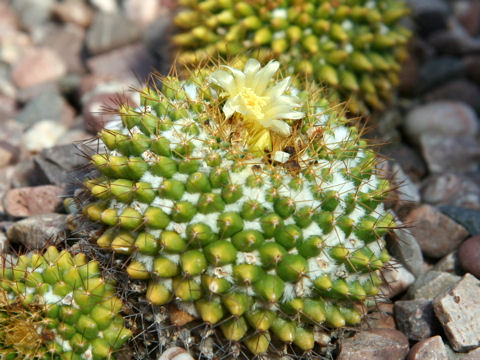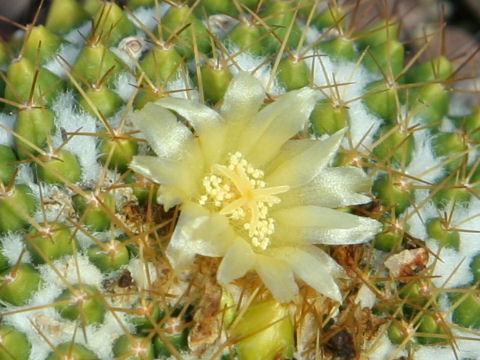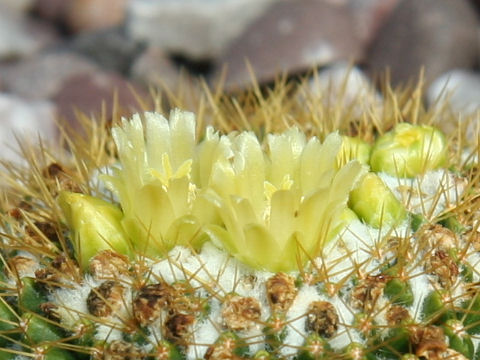 |






|

|
LVRÌkA\mBì©çViABAhDSBª´YÅ·BÁØâ÷Ø̺ÉAÓ¤ÍPÆɶ¦Ü·BsÍÎF©ç©ÎFÅA³ÍT`PTZ`ÉÈèÜ·B¢ÚÍpóÅAtãüÍE[óÌÑɿĢܷB~ÌIíèÉ©F¢Ôð穹ܷBÊÀÍÎÁÛAÄÉnµÜ·B|ãÍAu«ñæ¤ÜéiàmÛjvÆÄÎêÜ·B
|

|
T{eÈ}~A®ÌánT{eÅAw¼Í Mammillaria marksianaBp¼Í Cabeza de ViejoB
|

|
The Cabeza de Viejo (Mammillaria marksiana) belongs to Cactaceae (the Cactus family). It is an evergreen succulent perennial that is native to northern Mexico, southern Sonora to Sinaloa and Durango. This cactus grows under shrubs or trees and is generally solitary. The stem is bright green to yellowish green and can reach 5-15 cm in height. The tubercles are pyramidal, and the axiles are filled by woolly hairs. The yellow flowers come in late winter. The fruits are greenish and ripen in summer. 'Cabeza de Viejo' has a meaning of 'Old man's head'.
|

|
ê§l¼sul¼t[p[NvÉÄA2007N0314úBeB
|


